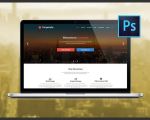- 1. The Importance of Fast-Loading Pages
- 2. Basic Website Design Techniques for Speed
- 3. Image Optimization: A Key Factor in Speed
- 4. Minimizing HTTP Requests for Faster Loading
- 5. Caching Strategies to Improve Load Time
- 6. Real-World Examples: Success Stories of Fast Websites
1. The Importance of Fast-Loading Pages
In today's digital world, speed is essential when it comes to website performance. Fast-loading pages not only enhance user experience but also contribute significantly to better SEO rankings. Studies show that users expect a website to load within 2-3 seconds, and if it takes longer, they are likely to abandon the site. This is why website speed optimization is a critical part of web design.
Search engines, such as Google, factor page load speed into their ranking algorithms. Faster websites tend to rank better, resulting in more organic traffic and a better overall user experience. A slow website can negatively impact everything from user engagement to conversion rates. Therefore, adopting effective website design techniques for fast-loading pages is crucial to maintaining a competitive edge in today’s fast-paced internet landscape.
2. Basic Website Design Techniques for Speed
When designing a website, it’s important to prioritize simplicity and efficiency. Here are some basic design techniques that can contribute to faster load times:
- Clean, Minimalist Design: Avoid excessive elements that slow down your website. Use simple layouts and clean code to make the site more lightweight and easy to load.
- Responsive Design: A responsive design ensures that your website adjusts properly on any device, reducing the need for additional content or files that can slow down the loading process.
- Use of Web-safe Fonts: Avoid using too many custom fonts, as they can increase the load time. Stick to web-safe fonts that are readily available on most devices.
- Efficient CSS and JavaScript: Minimize and combine CSS and JavaScript files to reduce HTTP requests, which can improve load time significantly.
By focusing on these fundamental design principles, you can ensure that your website remains fast and responsive, providing a better experience for users and helping improve your site’s performance in search engine rankings.
3. Image Optimization: A Key Factor in Speed
Images are one of the most significant contributors to slow-loading pages. Large image files can drastically slow down your website’s load time. Optimizing images is a key technique for improving website performance. Here are some strategies for effective image optimization:
- Use the Right File Format: Depending on the type of image, you should use the appropriate format (JPEG for photos, PNG for graphics with transparency, GIF for simple animations, etc.).
- Compress Images: Reduce the file size of images without sacrificing too much quality. Tools like Photoshop, TinyPNG, and other online compressors can help you achieve this.
- Implement Lazy Loading: Lazy loading ensures that images only load when they come into view on the user’s screen, reducing initial load time.
- Responsive Images: Use responsive image techniques to serve different sizes of images based on the device’s screen size. This ensures that large images are not unnecessarily loaded on mobile devices.
By optimizing images, you can significantly reduce page load times and improve your website's user experience, which will ultimately help with SEO rankings.
4. Minimizing HTTP Requests for Faster Loading
Each time a user visits a website, their browser has to make several HTTP requests to fetch different elements of the page, such as images, stylesheets, and scripts. Reducing the number of these requests is a crucial technique for improving page load speed. Here are some ways to minimize HTTP requests:
- Combine CSS and JavaScript Files: Instead of loading multiple CSS or JavaScript files, combine them into single files to minimize requests.
- Use CSS Sprites: Combine multiple images into one single image file called a sprite. This reduces the number of image requests made to the server.
- Eliminate Unnecessary Plugins: Many plugins can add unnecessary HTTP requests to your site. Disable or remove plugins that are not essential to the functionality of your website.
By minimizing HTTP requests, you decrease the amount of data that needs to be transferred, leading to faster load times and improved website performance.
5. Caching Strategies to Improve Load Time
Caching is one of the most effective techniques for improving page load speed. Caching allows browsers to store static files, so users don’t have to download them each time they visit a page. By leveraging caching, you can reduce the number of requests to your server and speed up page loading. Some caching strategies include:
- Browser Caching: Configure your server to store files locally in the user’s browser, so they don’t need to be reloaded on subsequent visits.
- Content Delivery Networks (CDNs): Use CDNs to store copies of your website’s files in multiple locations around the world. This allows users to download data from the server closest to them, improving load time.
- Cache-Control Headers: Use cache-control headers to specify how long browsers should cache files. Setting appropriate expiration times ensures that content is only reloaded when necessary.
Implementing proper caching strategies can drastically reduce load times, leading to a more efficient and faster website.
6. Real-World Examples: Success Stories of Fast Websites
Many high-traffic websites have successfully implemented fast-loading page techniques, resulting in better user engagement and improved search rankings. For instance, e-commerce giants like Amazon and Shopify have optimized their websites to load in under 3 seconds, significantly enhancing user experience and boosting conversion rates.
Another example is Google itself. Google’s lightweight, minimalist design prioritizes speed, ensuring that users get the information they need as quickly as possible. By reducing unnecessary elements and focusing on performance, Google’s approach has set the standard for fast-loading pages in the industry.
These success stories prove that prioritizing speed through effective design and optimization techniques can lead to better user retention, higher conversion rates, and improved SEO results.








